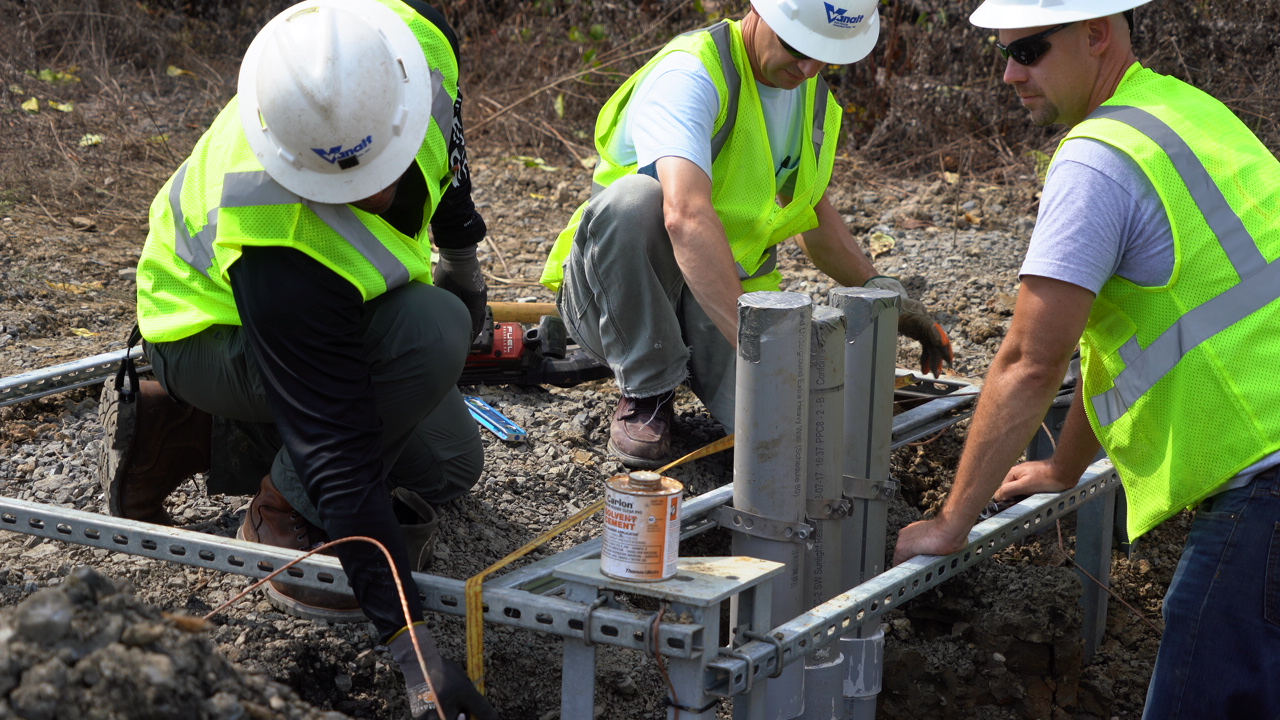The 1,900 daily riders of the line have had to seek alternate means of transport since last month, and will continue to do so for the next few months. NJ Transit’s contractors have been on the line since then, working on PTC installation. A senior NJT official tells Trains that this week saw four separate crews working at Cherry Hill, Hammonton, and two other locations on the line.
The complete shutdown enabled the passenger equipment to be used on other NJ Transit rail lines to hasten PTC installation on locomotives and cab control cars.
Oct. 14 will see NJ Transit reductions in train service, additional stops, and temporary shutdowns on other lines as well. The Morris and Essex Gladstone line from Summit to Gladstone will see weekend PTC installation line shutdowns with a bus shuttle. The 2.7-mile Princeton, N.J., “Dinky” is to shut down completely. That branch will not need PTC due to its one-train operation. The two Arrow III mu cars used are badly needed during the rush to complete full PTC equipment on the 282 NJ Transit locomotives and cab cars by the end of the year.
The Atlantic City line, along with the other 11, is expected to return to normal scheduling sometime after New Year as crew work toward the mandated Dec. 31 Federal Railroad Administration compliance deadline.















Sorry about that. Yes, PRSL gave up its Philly service when the PATCO high-speed line opened to Phila over a shorter route. ICC was allowing withdrawal of CSS where economically infeasible and PRSL qualified.
BTW PATCO’s fleet came from Budd, so you could still ride to Philly in a Budd car, but North of Lindenwold it was now an electric rapid transit car. They’re still running 50 years later.
Phillip – The AC line did not have CCS until Amtrak/NJT rebuilt the line in the late 80s The WJ&S (PRR) stuff was all OOS in the last days of PRSL (probably after the Budd cars stopped running past Lindenwold.)
“The 2.7-mile Princeton, N.J., “Dinky” is to shut down completely. That branch will not need PTC due to its one-train operation.” Can someone explain to me why having just one train on the line gives that line a pass on PTC. There was only one train involved in the Spuyten Duyvil overspeed derailment in New York. There was only one train involved in the #188 derailment in Philadelphia. Most of these derailments involve crew error not collisions with other trains. An exception might be the Silver Star crash in South Carolina. The Southwest Chief is still subject to overspeed derailments or crew inattention even it it is the only train on the line. Someone please explain. Thank you.
Robert McGuire,
The explanation is quite simple really, that is how the law implementing PTC was written, if there’s only one train on a line and it doesn’t share the tracks with freight or anything else then PTC is not required…which makes complete sense because the cost of PTC is prohibitive for 1 train…ignoring your comments about the rare occasions that crew based accidents…most involve something other than just crew members, not always another train but there are hundreds of other reasons that they can happen.
The AC Line has had pulse code cab signals since PRR subsidiary WJ&S installed them in the 1920’s. The engines, including some of the K4’s, got Train Control (overspeed warning and penalty brake applications) in the early 1950’s. If all goes well only the ACSES hardware needs installed, unless NJT wants to upgrade the signal hardware and wiring. This should not take 4 months but I’m presuming NJT wants the cars and crews for North Jersey operations.